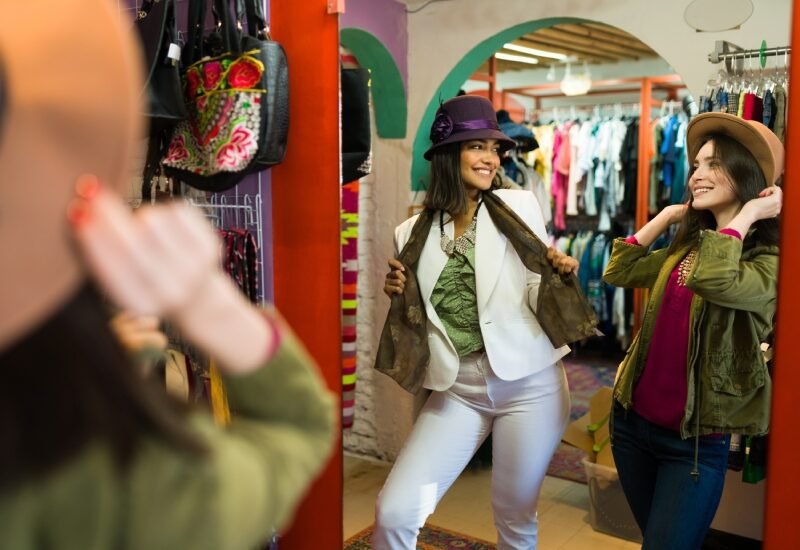
Thrifting is a win for your wallet and the planet. But it’s equally important to thrift responsibly by balancing your love for unique finds with thoughtful consideration for others. By approaching thrift shopping with intention, you can celebrate personal style while leaving essential items for those who rely on second-hand stores to clothe themselves and their family.
The Impact of Thrifting
Many second-hand stores and charity shops are lifelines for people who can’t afford retail prices. High-demand items among low-income shoppers, such as warm winter gear, children’s clothing, and work attire, are essential for these organizations to have in stock. When recreational thrifters buy up all of these items, they unintentionally limit access for those with fewer options.
Thrift shopping is for everyone, but it’s useful to consider how inventory shortages can affect others. Winter coats or durable shoes become even harder to find when bought solely for the thrill of a great deal.
Recognizing Essential Items for Those in Need
Items like baby clothes, workwear, and thermal coats are vital for individuals in shelters or low-income households. This applies to both shopping and donating; when it’s time to donate your items that are in good condition, especially warm ones, consider setting aside durable winter donations for shelters.
Items such as scarves, gloves, or blankets are especially appreciated during colder months. Similarly, sturdy shoes and weather-resistant clothing fulfill practical needs for those navigating difficult conditions.
Whether you are looking through or compiling the donations, take a moment to consider who might need this clothing the most. While you hunt for your next vintage treasure, consider leaving the nice button-down for someone who has a job interview they need to land. And remember, shelters are also excellent options for directly donating high-need items rather than reselling them in thrift stores.
Tips for Responsible Thrifting
Shop Mindfully
Before purchasing, ask yourself if the item is something you truly need or love. Be purposeful, buy only what you will wear, and consciously leave essentials you don’t need for individuals with fewer resources.
Prioritize Non-Essentials
If you find trendy pieces or quirky fashion, these are perfect options for personal thrifting. However, pass over high-demand items, like near-new coats, snug winter boots, or professional wear, unless necessary. Thrifting is the perfect opportunity to elevate your closet with fun pieces you wouldn’t find at retailers.
Separate Donations
When on the donation side, donate functional winter gear and practical everyday items directly to shelters or nonprofits. This step guarantees necessities go straight to those in urgent situations, while thrift stores remain ideal for decorative household goods or statement fashion.
Find a Balance
No one is saying to stop thrifting or not buy something you will wear every day. However, focusing on expressing your style through accessories, vintage finds, or less essential pieces can help others in the long run. It’s all about leaving space for those who rely on thrift shops as their primary source of basic clothing.
Start small, leave that extra pair of sturdy boots behind, or donate your extra pair of gloves to a shelter. These thoughtful actions aren’t just mindful; they’re meaningful. Let your unique style shine while making a difference for others.
